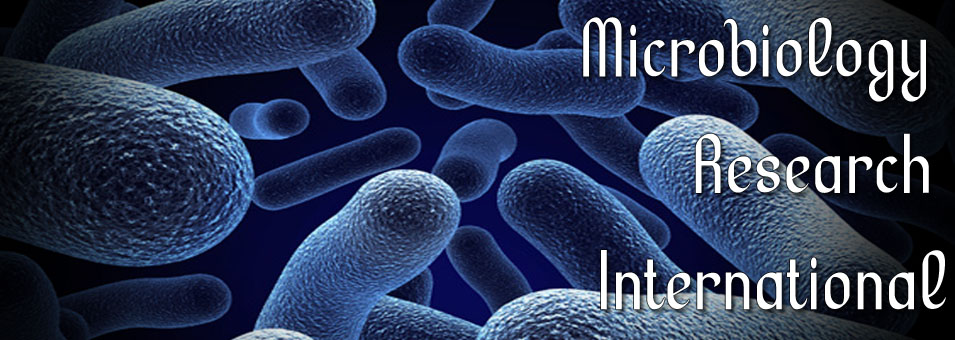Characterization for Staphylococcal enterotoxin B production and antibiotic susceptibility of Staphylococcus aureus isolated from Staphylococcul gastroenteritis (diarrhea)
Iman Jawad KadhimMicrobiology Research International
Published: September 26 2014
Volume 2, Issue 3
Pages 38-45
Abstract
One hundred and seventy five diarrhoeal swab samples were collected twelve isolates (6.7%) were obtained and diagnosed as Staphylococcus aureus. Among 12 isolates, 8 (66.7%) were found to be positive for production of enterotoxin B. Antibiotic sensitivity of 12 S. aureus isolates were surveyed for susceptibilities to a panel of 20 antibacterial agents. S. aureus were 100% sensitive to Fusidic acid, while in the opposite direction, 100% resistancy was recorded for ampicillin and penicillin. Graded resistant was observed in the others, include: 66.7% for erythromycin, tetracycline, oxacillin and methicillin. In addition, the isolates showed resistance to trimetheprim (58.3%). The results of this study showed that a wide spread of enterotoxigenic and multidrug-resistant S. aureus isolates which isolated from diarrhea samples. The lowest pH value at which Staphylococcal enterotoxin B (SEB) production was observed 4 in the two isolates (SA4 and SA12). These isolates were able to produce SEB even at pH 10.5, which was the highest pH value among the isolates. The lowest temperature at which SEB production manifested was 20°C in four isolates (SA2, SA4, SA11 and SA12), while the highest temperature at which SEB was produced was 45°C, in three isolates (SA2, SA11 and SA12). SEB is produced within a wide pH range but the influence of temperature is an essential factor for the production of this toxin.
Keywords: Antibiotics, enterotoxin B, Staphylococcus aureus.
Full Text PDF
